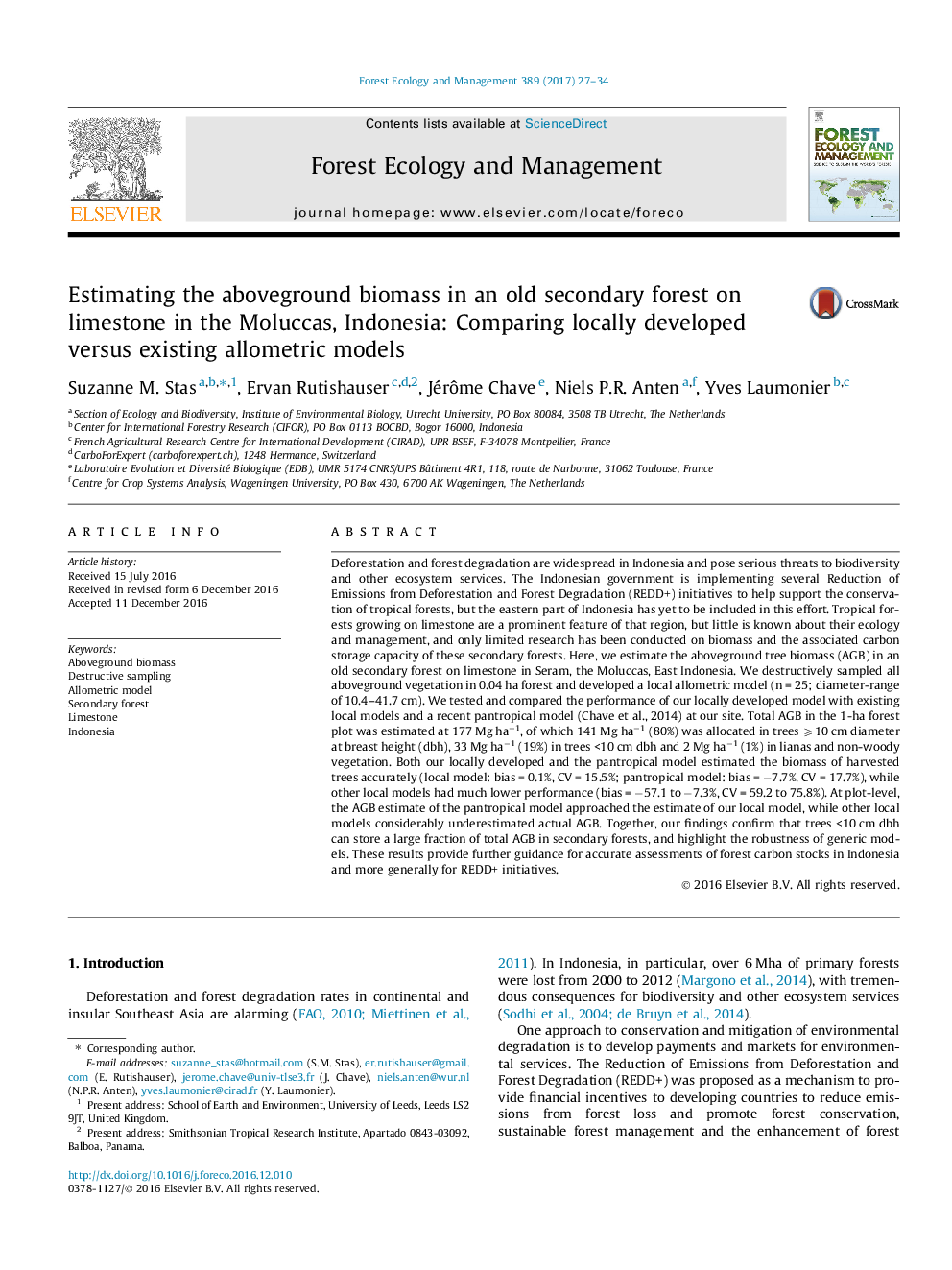| Article ID | Journal | Published Year | Pages | File Type |
|---|---|---|---|---|
| 4759486 | Forest Ecology and Management | 2017 | 8 Pages |
Abstract
Deforestation and forest degradation are widespread in Indonesia and pose serious threats to biodiversity and other ecosystem services. The Indonesian government is implementing several Reduction of Emissions from Deforestation and Forest Degradation (REDD+) initiatives to help support the conservation of tropical forests, but the eastern part of Indonesia has yet to be included in this effort. Tropical forests growing on limestone are a prominent feature of that region, but little is known about their ecology and management, and only limited research has been conducted on biomass and the associated carbon storage capacity of these secondary forests. Here, we estimate the aboveground tree biomass (AGB) in an old secondary forest on limestone in Seram, the Moluccas, East Indonesia. We destructively sampled all aboveground vegetation in 0.04 ha forest and developed a local allometric model (n = 25; diameter-range of 10.4-41.7 cm). We tested and compared the performance of our locally developed model with existing local models and a recent pantropical model (Chave et al., 2014) at our site. Total AGB in the 1-ha forest plot was estimated at 177 Mg haâ1, of which 141 Mg haâ1 (80%) was allocated in trees ⩾10 cm diameter at breast height (dbh), 33 Mg haâ1 (19%) in trees <10 cm dbh and 2 Mg haâ1 (1%) in lianas and non-woody vegetation. Both our locally developed and the pantropical model estimated the biomass of harvested trees accurately (local model: bias = 0.1%, CV = 15.5%; pantropical model: bias = â7.7%, CV = 17.7%), while other local models had much lower performance (bias = â57.1 to â7.3%, CV = 59.2 to 75.8%). At plot-level, the AGB estimate of the pantropical model approached the estimate of our local model, while other local models considerably underestimated actual AGB. Together, our findings confirm that trees <10 cm dbh can store a large fraction of total AGB in secondary forests, and highlight the robustness of generic models. These results provide further guidance for accurate assessments of forest carbon stocks in Indonesia and more generally for REDD+ initiatives.
Related Topics
Life Sciences
Agricultural and Biological Sciences
Ecology, Evolution, Behavior and Systematics
Authors
Suzanne M. Stas, Ervan Rutishauser, Jérôme Chave, Niels P.R. Anten, Yves Laumonier,
